For many first-time Yellowstone National Park visitors, the chance to see a wild wolf, black bear or grizzly is at the top of the wish list. But information on how to see one of the large predators can seem contradictory.
Some wildlife web sites lead one to believe that seeing a bear or wolf is so easy that you don’t even have to really try. Then a newbie visitor arrives at a park bigger than some states, feels overwhelmed … and doesn’t see a bear.
On the flip side, many general travel forums lead one to believe that finding a bear or a wolf is not a realistic goal. I’ve seen countless commenters on Lonely Planet and Tripadvisor suggest that you won’t see a predator unless you spend several weeks backpacking, and even then you’d have to be extraordinarily lucky.
The truth is this: You can see bears and wolves in Yellowstone. You just need to know where and how to look.
I won’t guarantee you a sighting. But if you follow these tips, you should find bears, or wolves, or both. Have your own tips? Leave them in the comments.
-
Head North.
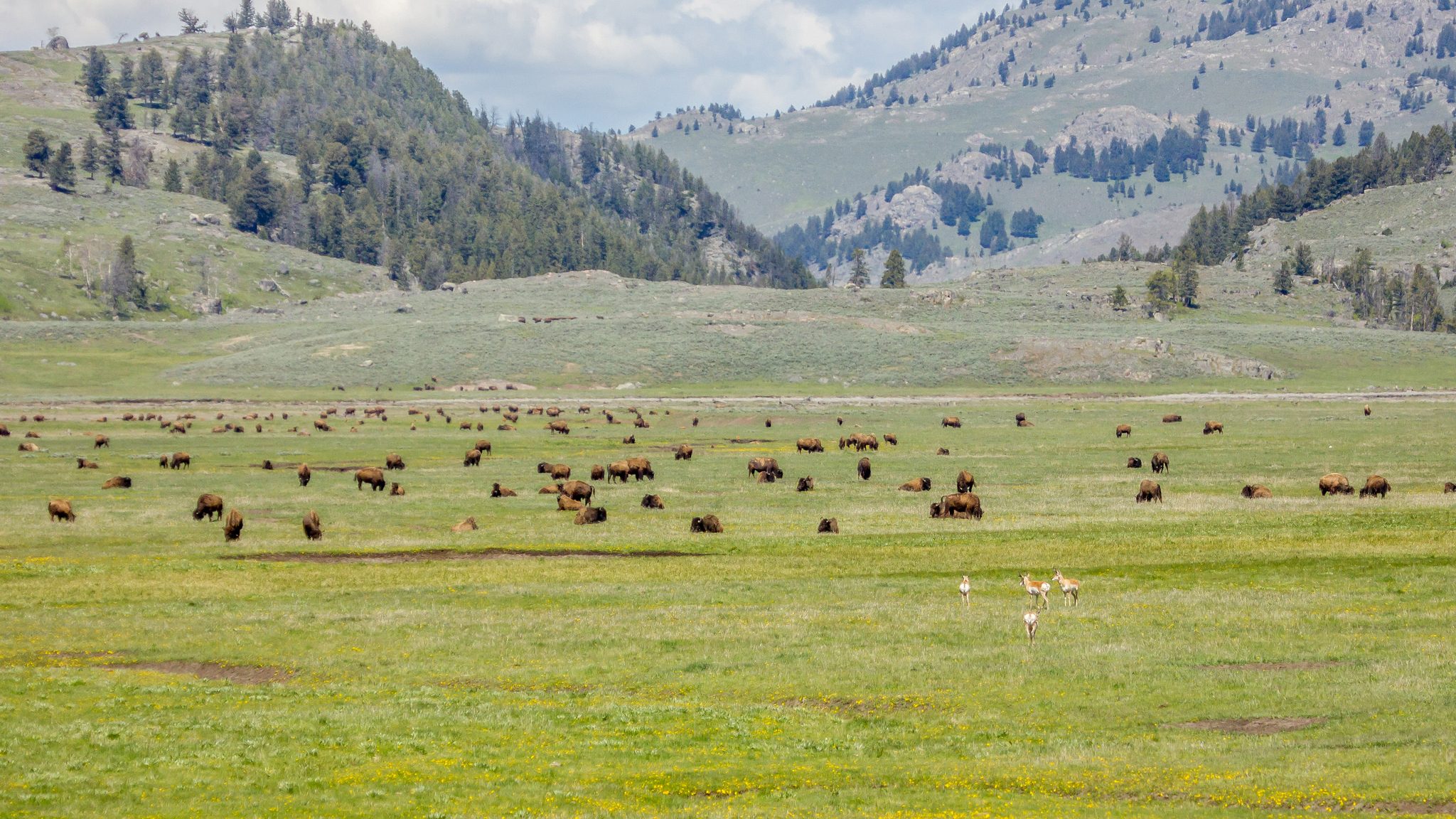
Bison and pronghorn in the Lamar Valley. Photo by Diane Renkin / Yellowstone National Park on Flickr in the Public Domain A visitor sees zero bears, and then pronounces bears “impossible to find.” The fact is that you are extremely unlikely to see a large predator at Old Faithful. If you want to see the best wildlife, head north to the comparatively less-visited part of the park.
The Lamar Valley has been called the Yellowstone’s “Serengeti” due to the open meadows and large herds of bison, pronghorns and other wildlife. Where there is prey, there are predators. Spend a lot of time looking in the Lamar Valley, and your chances at a great wolf or grizzly sighting increase exponentially.
The whole drive from Mammoth to the northeast exit at Cooke City, Montana, is great predator country. Black bears are commonly seen in the Tower area and meadows around Mammoth. Grizzly bears can often be spotted in these meadows as well.
The Hayden Valley is the one easily accessible spot in the southern part of the park that is worth a predator stake-out. Like Lamar, this is an open valley with lots of bison. Spend time at dawn or dusk, and you have a good chance at seeing wolves and grizzlies, sometimes at the same time.
-
Always be Alert, Even Away From the “Hotspots.”
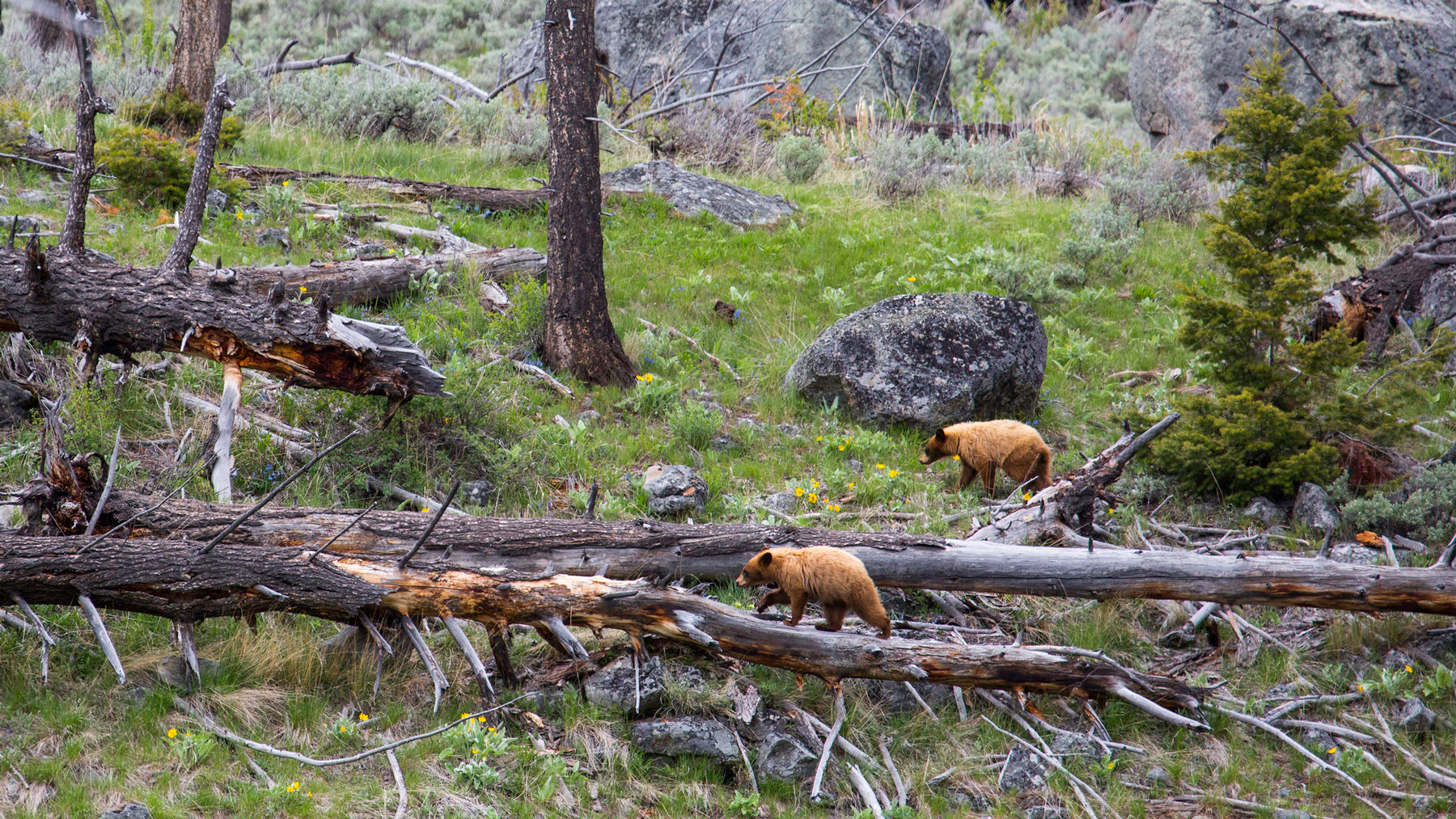
Yearling black bears (cinnamon), Slough Creek. Photo by Neal Herbert / Yellowstone National Park on Flickr in the Public Domain I watched the large wolf chewing on an elk leg, just a short distance off the road. Meanwhile, cars whizzed past – probably heading to Lamar Valley to look for wolves. We were in a part of the park not especially known for wolf sightings, and no active packs were reported in the area. But wolves roam.
It is true that some areas of the park are more reliable than others for wildlife. Yellowstone is also not a zoo. I think many great sightings are missed simply because visitors are not looking.
My best wolf sighting occurred at 10 pm driving (slowly) back to our lodging. A pack of wolves stepped onto the road, full moon in background, and walked around the car – just feet away. My best grizzly sighting? That would be on a national forest road just outside Grand Teton National Park. We were looking for moose when a very large bruin stepped across the gravel road, and then began rooting for ground squirrels. No other cars were in sight. Put in the time, get off the beaten path, and you’ll be amazed what you find.
-
Ask the Experts
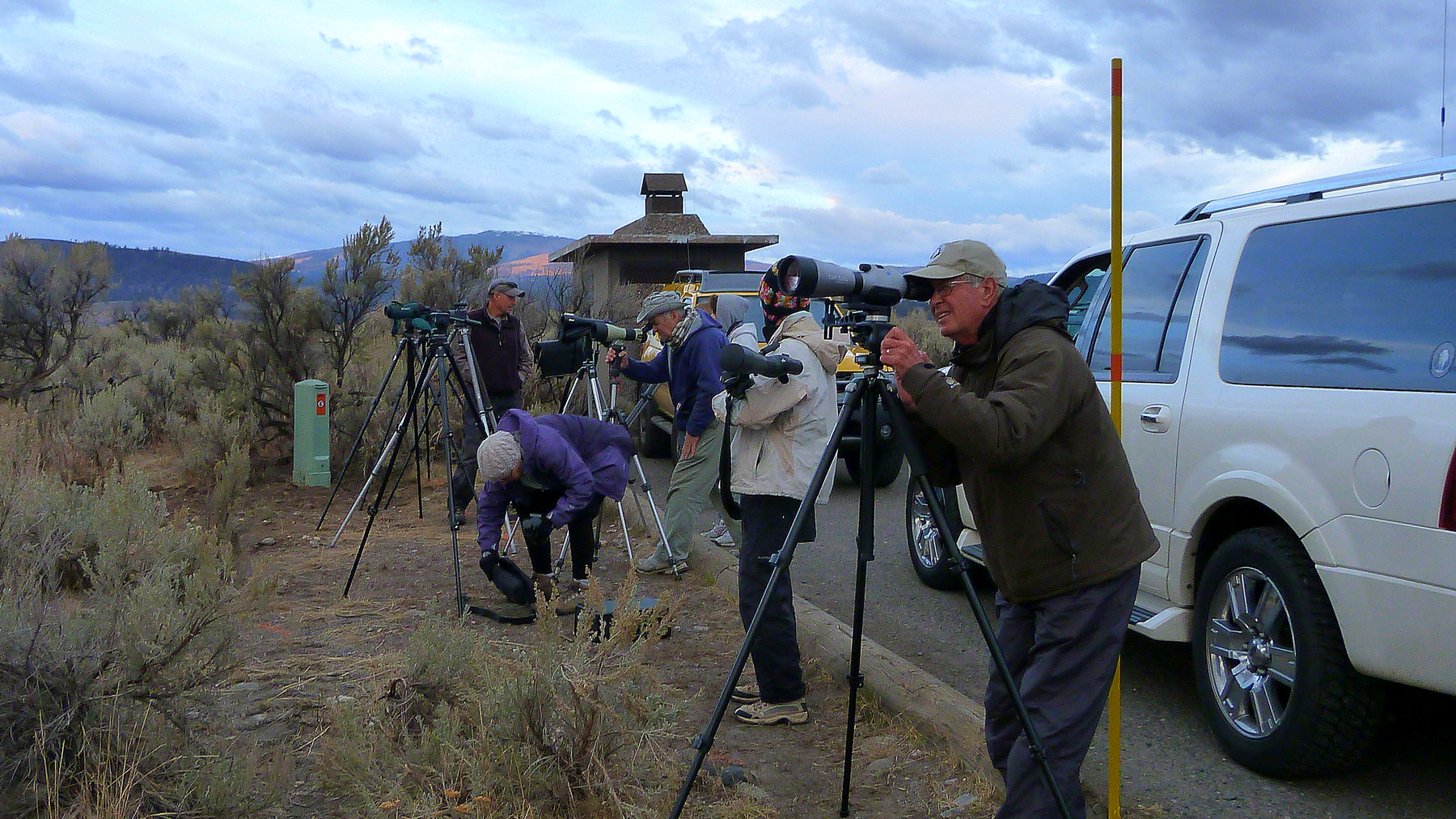
Wolf watchers in the Lamar Valley. Photo © F Delventhal / Flickr through a Creative Commons license Yellowstone’s wolves have attracted a network of super-fans, akin to a rock band’s followers who never miss a concert. You will see these folks in the Lamar Valley with large spotting scopes and intense gazes. They are usually quite friendly and will offer advice. Some know that a particular wolf has been emerging at a certain spot every evening. Some will let you peer through their scope at a distant wolf.
This next bit should go without saying, but I’ve seen it happen too many times. Don’t hop out of the car, music blaring, and yell “What are you looking at?!?!” This will not help you see wolves. Be courteous and polite, and experienced wildlife watchers will often help you find the critters.
You can also check on dedicated forums, like the excellent Yellowstone Net, for current hotspots and the latest news from wildlife watchers. These forums often list where wolves or grizzlies are being spotted, and can also point you to other interesting sightings like great gray owls, badgers, bighorn sheep and more.
-
Know How to Look
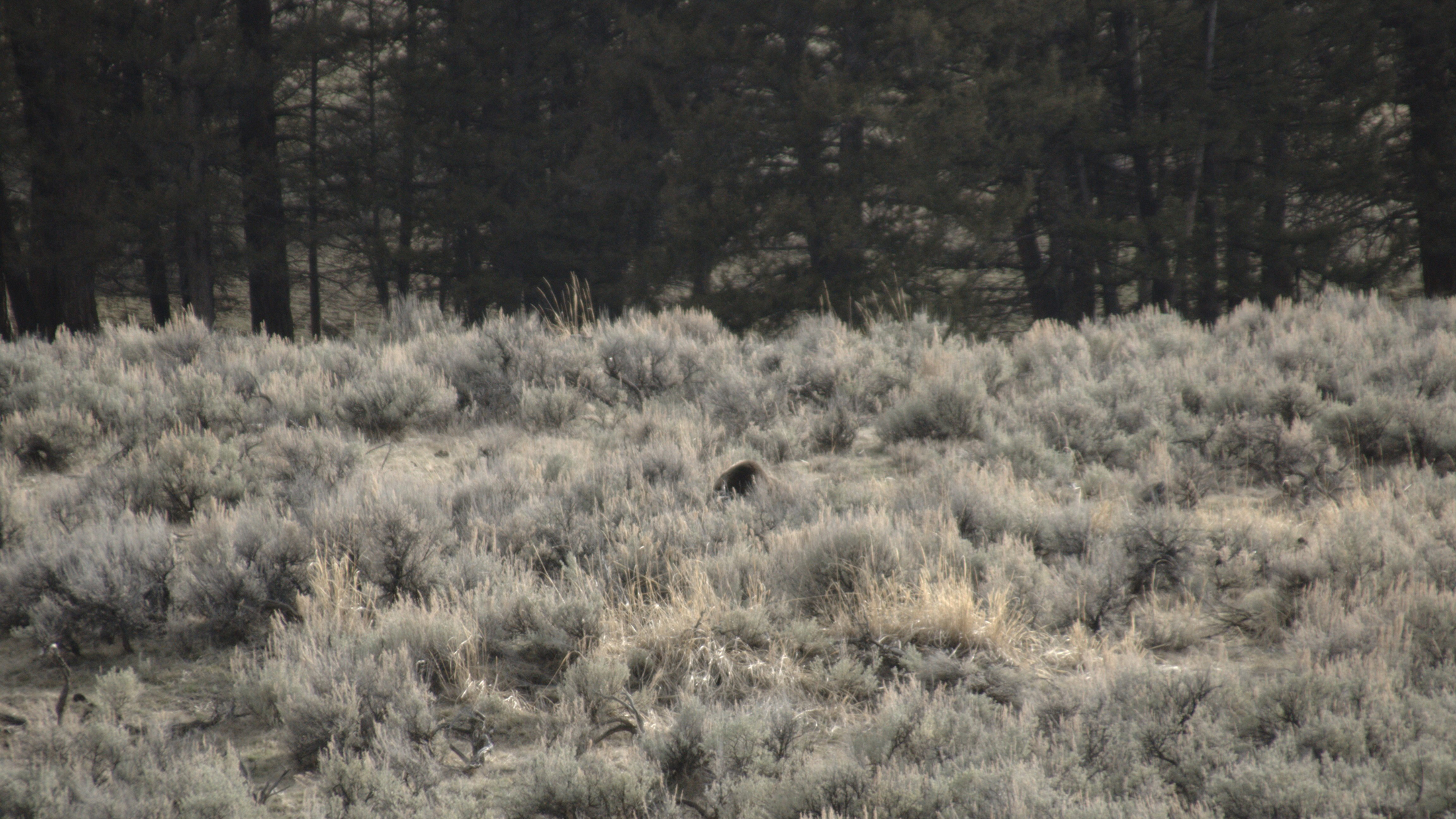
Yellowstone grizzly bear. Photo © Patrick Finnegan / Flickr through a Creative Commons license I’ve been looking for wildlife my whole life, so it can be easy to forget that there is an art to looking. I have had a bear step out of a meadow 50 yards away, but most sightings are not like that. You need to know how to look – seeking that bit of movement in the landscape, a patch of hair, something that just looks a bit more alive.
You will find yourself staring at a lot of stumps. But sometimes those stumps start to move and turn into a nice black bear.
The art of looking can be hard to explain. It mainly takes practice. Try finding birds at your neighborhood park. See how many wildlife species you can spot on an evening walk. Your eyes will be trained to look for wildlife, and you’ll see more.
Binoculars are a must — you can see a long way in the Lamar Valley. Many dedicated wildlife watchers use spotting scopes, too, but I have found that binoculars are sufficient most of the time.
Finally, be sure to study the differences between black bears and grizzly bears, and wolves and coyotes. There are many online guides that can help.
-
Carcasses!
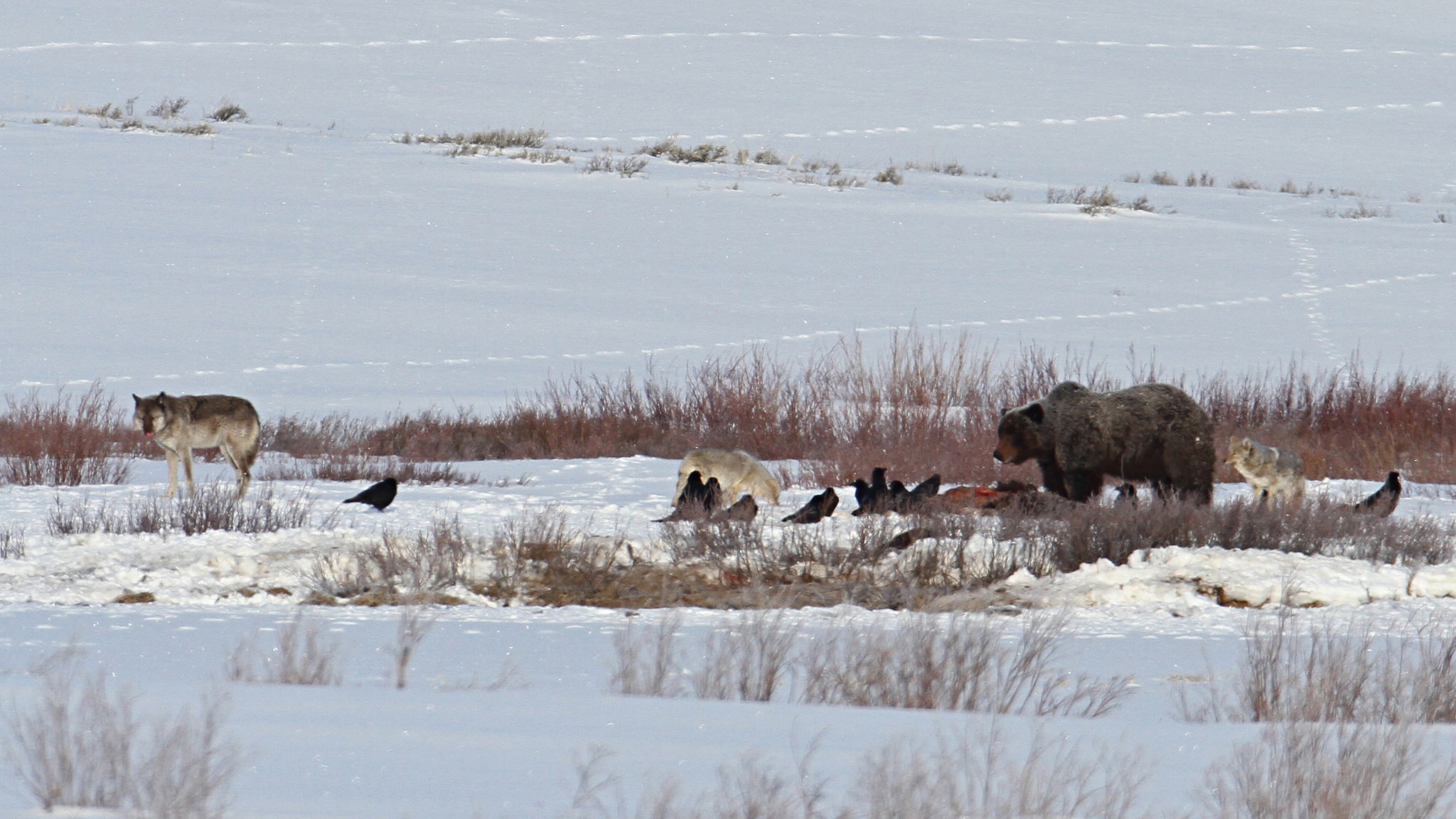
Grizzly, wolf, coyotes, ravens on carcass. Photo by Jim Peaco / Yellowstone National Park on Flickr in the Public Domain A dead elk or bison is a predator buffet. Stake it out, and you are going to see cool stuff. In fact, many of the people with spotting scopes you see in Lamar Valley are watching over a carcass. No predator passes up easy meat. Wolves, bears, coyotes, foxes, bald eagles, ravens and magpies all want the calories. This can lead to a lot of drama at kill sites. Sometimes the strong prevail, but the fast and nimble (like ravens) can often score some choice bits.
The disclaimer here is that should you find a carcass, you should be far away and in a vehicle. If you are hiking and come across a carcass, move away. Fast.
-
Visit During the Off Season
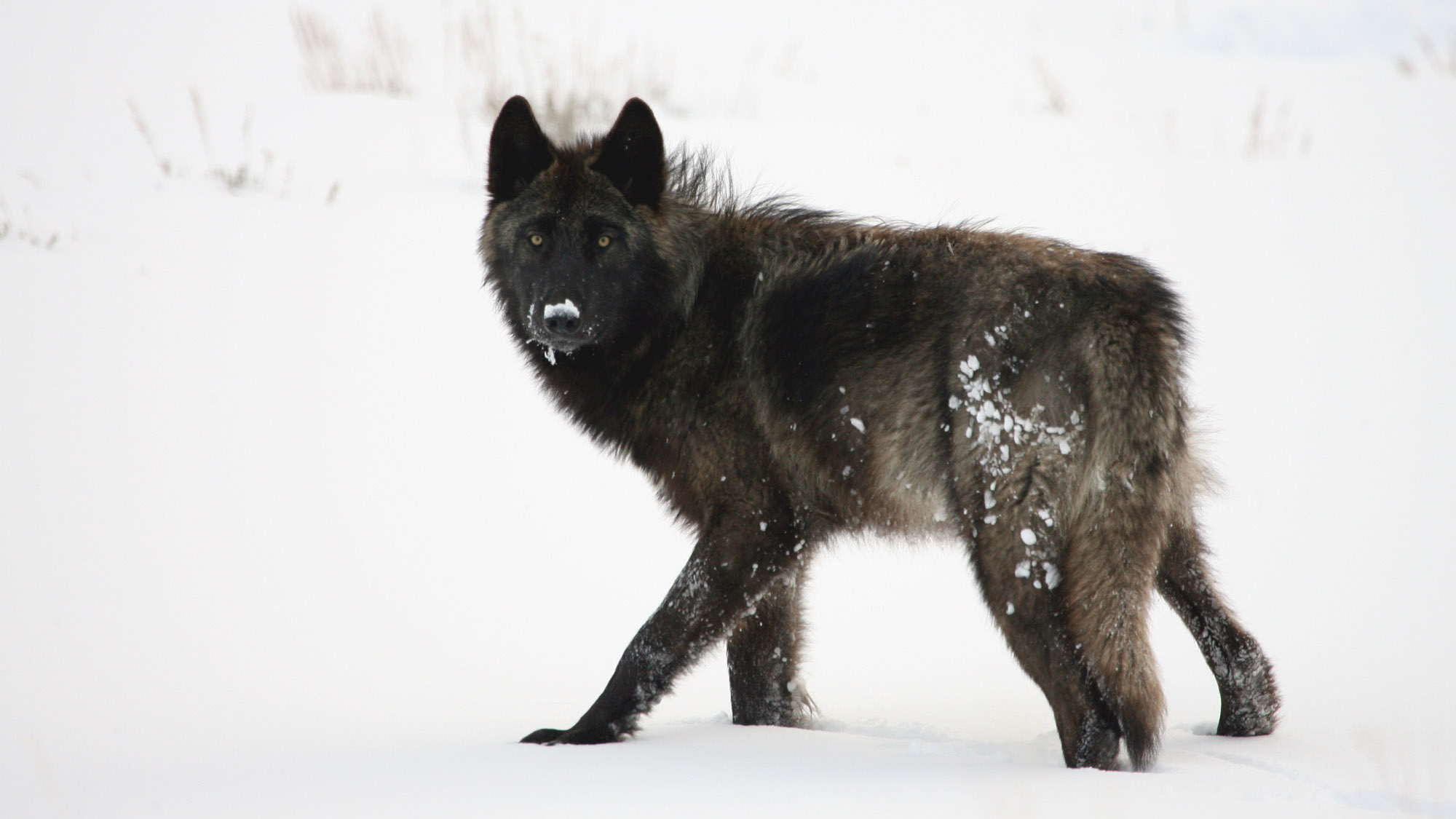
Wolf in Lamar Valley. Photo by Jim Peaco / Yellowstone National Park in the Public Domain I have had great predator viewing even during the busiest times in the park, like the July 4 holiday. But the off season can be rewarding too, and you’ll be sharing your sightings with a lot fewer visitors.
Grizzly bears emerge from hibernation in the spring and are actively seeking out food. Similarly, in the fall, they’re putting on weight for the winter. As a bonus, the elk are bugling.
In the winter, many enthusiasts enjoy watching wolves in the Lamar Valley (the northern road is the only one maintained in snowy conditions). Even in the southern part of the park, you can enjoy bison sightings (and even Old Faithful) with no one else around.
-
Don’t Overlook The Other Creatures
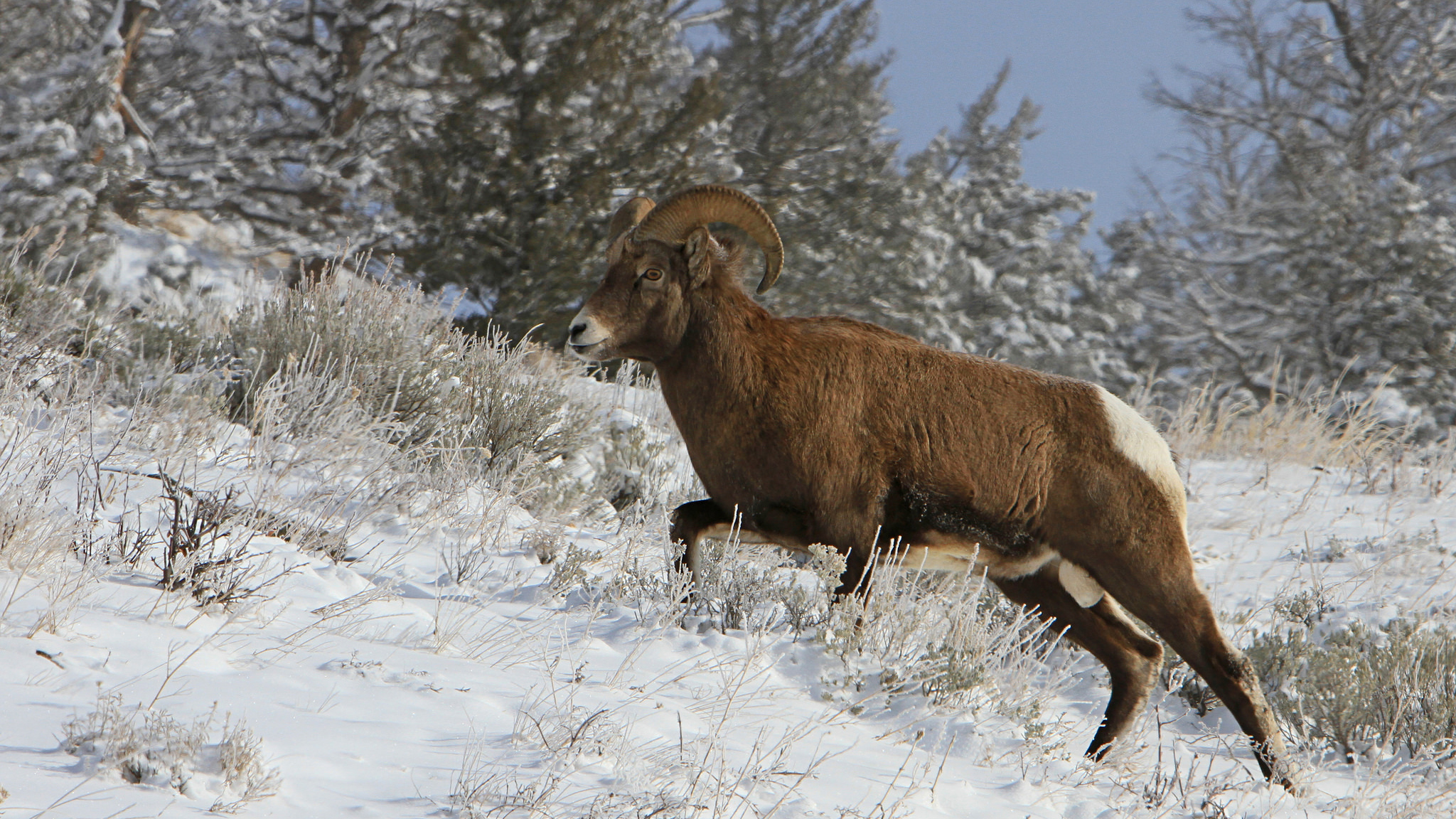
Bighorn sheep ram. Photo by Jim Peaco / Yellowstone National Park on Flickr in the Public Domain Yes, bears and wolves are awesome. But don’t lose sight of where you are, and the many other wildlife wonders around you. Bison are extremely abundant, but many seem to snap a few photos and then move on. Observe them (from a distance, of course). You might see a nursing calf, battling bulls, a herd swimming across a river, or a cow on alert for predators.
Look for smaller creatures. I’ve seen river otters catching and tearing apart cutthroat trout, Clark’s nutcrackers raiding camp sites, a badger trotting through sagebrush, a bighorn ewe giving birth to a lamb on the side of a cliff.
Every visit, I see something new. I know that sounds like a cliché, but it’s true. The park rewards the patient and observant naturalist. Every time.
-
Read and Learn About These Creatures Before You Go
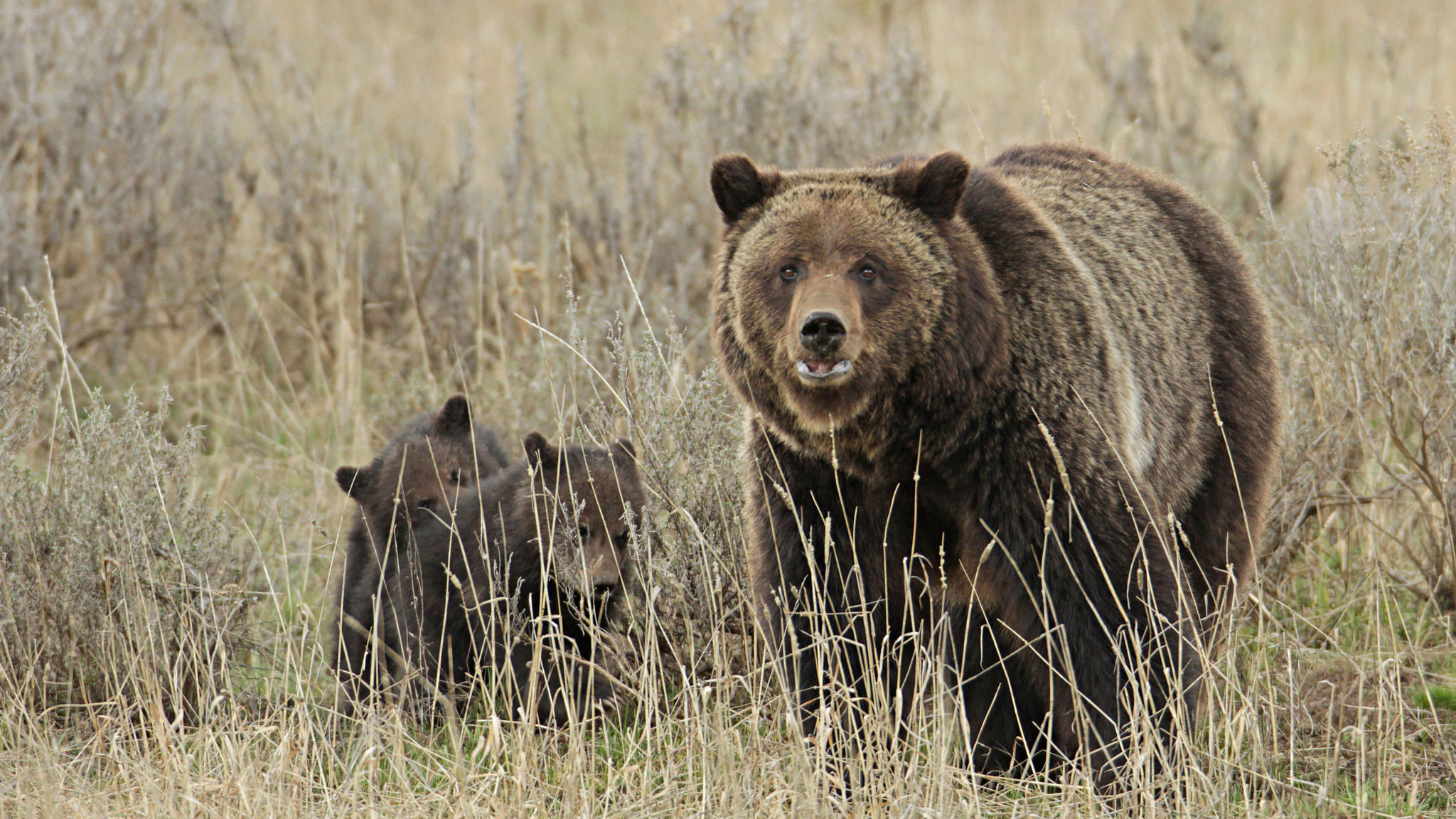
Grizzly sow and cubs near Fishing Bridge. Photo by Jim Peaco / Yellowstone National Park on Flickr in the Public Domain Understanding the creatures you’re seeking makes for a much more fulfilling adventure. Yellowstone’s wolves and bears are among the most-studied creatures on earth. This has led to an especially rich literature, both scientific and popular.
I particularly recommend Engineering Eden, a recent book by Jordan Fisher Smith. It tells the often tumultuous history of bears and people in the park, including the changing ideas on bear research and conservation. As difficult as it is to believe, at one point Old Faithful hosted a nightly bear feeding. This book is one of those that reads like a novel, and will add context to your grizzly sighting.
Cristina Eisenberg has researched how wolves have changed Yellowstone’s ecology, and has written a couple of excellent books on the topic. I particularly recommend The Wolf’s Tooth. Yellowstone historian Paul Schullery has written and edited many books on the park, including Yellowstone Bear Tales, filled with the humorous and horrifying ways people have interacted with the great beasts over the past century of the park’s existence.
There are many more. Reading these books won’t necessarily help you find the creatures of your quest, but they will give you an appreciation for their importance to the park’s ecology, and just how hard conservationists have had to work to keep (and restore) them.
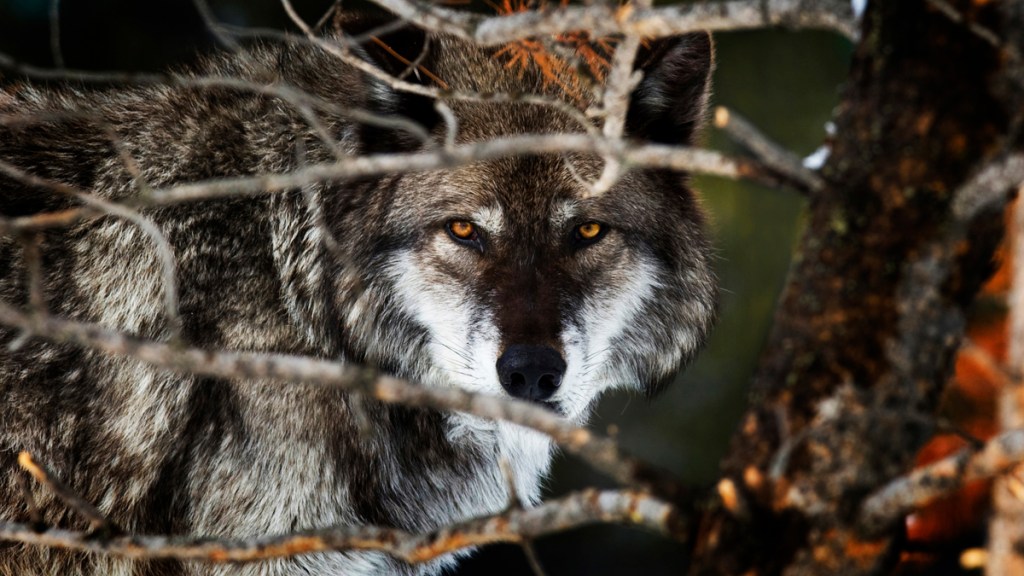



thank you so much Matthew! My two kids Chloe 15 and Finn 12 are so so excited to visit this September, it will be a dream come true. They are wolf defenders and have been pursuing their passion vigorously. This is a link to a community talk they have been giving in our region to inform and change wildlife management policy in our neck of the woods, British Columbia (https://www.youtube.com/watch?v=VjEDue4pODc). Our family Yellowstone trip is a homelearning research project as much as a vacation – a working holiday!! As such, what power of binocular do you recommend for Lamar Valley? Thanks a million, again! Mary
Hi Mary,
Thanks for your comment and question. This sounds like a great trip! You will see many people using high-powered spotting scopes in the Lamar Valley. They can certainly help for seeing wolves across the valley (and a lot of times wolf sightings can be distant). That said, I actually don’t use a spotting scope — I don’t like another bulky item to carry. I have used several 8x and 10x binoculars. 10x is good power without having to worry about the image being shaky.
I should also note that many of the serious wolf viewers are very friendly and want to share their knowledge. If you see a cluster of them, you may want to unobtrusively tell them about your kids’ project. They will almost certainly share any spotting scope views with your kids and you. I have found that wolf watchers are generally very willing to share their spotting scopes.
Also, as I wrote in my blog, be patient and keep an eye out anywhere. Some of my best views have been when I’ve least expected it — and no binoculars required.
Have a great trip and thanks again for posting here.
Matt
go to their favorite territory around dawn or dusk use a predator call and wait quietly with binoculars.
Calls of any type are prohibited in the Park!!
Excellent article that makes want to get back there. I think it is fine to look for animals. It is what you do after finding them that really matters. Just enjoy from a distance. Remember you are a visitor to their home. Oh, and they can really hurt you if you give them cause.
Thank YOU for all of this BEAUTY!!!
Yes look for animals, but do not disturb them. This is their world and belongs to them.
We saw a grizzly sow and two cubs in Pelican Valley from the road, not far east of Fishing Bridge. We were there in mid-October which we think is a fantastic time to visit.
Protect these animals, respect and leave them alone!
Just read about them and watch the videos!
Checked out Yellowstone Net, looks like a very good and useful site for all things Yellowstone, in one place. Unfortunately, as of today their forum is off-line after a malicious hack. Hope it’s back soon!
Protect all the Anmals.
Great recommendations. Thank you. Since we are coming on a tour our chances are slim for seeing wolves and bears but I enjoyed the article!
To tell you the truth, I wish people wouldn’t look for these magnificent animals. I don’t want the animals to get used to humans, who, as we know just love to kill them. They take my breath away and I wish our nation respected them as much as I do. If they happen to cross paths with you, fine, but otherwise I think we should just leave them alone.
Great tips Matt! I would add listening to the list – and not just for well-known noisy species like birds and wolves, but also for small, quiet things. I have learned to listen for the sound of snakes moving into the grass (of course I still usually only see their tails as they disappear) and recently I’ve started seeing more voles as I hear gentle rustling in grass or leaf litter.
Hire a guide! The industry of guided wildlife safaris has exploded in the park over the last 20 years. The reason for that is that a guide can teach guests so much about the wildlife of the park, as well as, cut through all the confusion that accompanies the roadside scene. The best companies already know where and when to be looking for certain species. Plus, many guides come equipped with premium optics equipment, which are a game-changer for nearly all wildlife viewing situations. At the end of the day, my guests consistently tell me the experience exceded their expectations, and was worth every penny!
Good article. I haven’t been to Yellowstone and as much as I would like it I may not get there. But I am delighted with the list of your recommended books and will be checking those out. I just recently signed up and am glad I did. Unlike so many blogs, yours has great substance. Thank you.